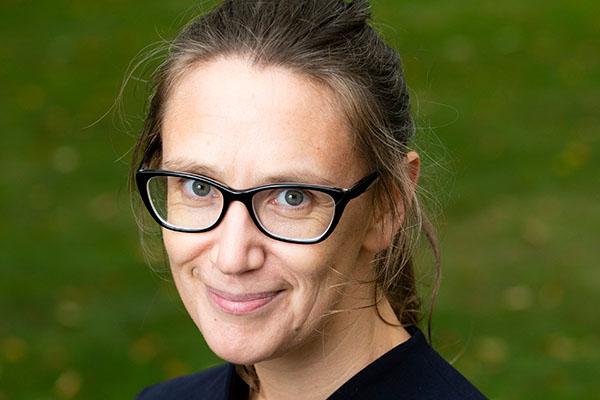The International Pull of Folklore and Cultural Heritage Studies: An Interview with Elo-Hanna Seljamma

By Connor Fairfield, CSEEES Autumn 2022 Intern
On October 17th, I had the pleasure of attending an informal discussion-oriented presentation given by Elo-Hanna Seljamma. Seljamma, an alumna of the Ohio State University, is currently an Associate Professor of Estonian and Comparative Folklore at the University of Tartu and is also a researcher at the University of Helsinki. She recently concluded a four-year start-up grant about performative negotiations of belonging in Estonia and is currently involved in a project at the University of Helsinki about transnational memory cultures of Ingrian Finns. In Tartu, she directs the international master's program Folkloristics and Applied Heritage Studies. During her presentation, Seljamma discussed one of the major organizations that she is part of as an educator at the University of Tartu which is known as the ERASMUS+ Program. The ERASMUS program, which stands for European Region Action Scheme for the Mobility of University Students, was originally founded in 1987. ERASMUS+ was started in 2014 and had the ultimate goal of implementing all the European Union’s current schemes for education, training, youth and sport. As the presentation progressed, Seljamma discussed her involvement in this program at the University of Tartu as a part of the International MA program. Originally established in 2017, this two-year program gives foreign exchange students an opportunity to specialize in two specific areas of study titled “Analysis of Folklore and Cultural Heritage” and “Study and Application of the Heritage of Crafts”. Furthermore, to culminate the two-year program, students are required to complete either an MA thesis or final MA project that also contains a written component. At the University of Tartu, the program currently has twenty-three students enrolled from places all over the world including the United States, India, Ukraine, Estonia, China, Colombia, Iran, Japan, Mexico, Pakistan, Peru, Russia, South Africa, South Korea, and the United Kingdom. Since 2018 there have been thirty different graduates of the program from a variety of different countries. Near the conclusion of the presentation, Seljamma talked about a future project involving the ERASMUS program that will be launched in 2023. The program is titled “Education in Museums and Heritage” and is made up of a consortium of five different European universities in Scotland, Estonia, Ireland, Malta and the Netherlands. The goal of this future program is to have students complete four semesters at three different universities that focus their studies on museum education, intangible heritage education, digital cultures and humanities as well as art and visual culture. At the end of the presentation, I had the opportunity to interview Seljamma about the importance of folklore and Estonian culture among other things.
Where did your passion for folklore studies originate?
“In Estonia they have research competitions for school children. These competitions are dedicated to different disciplines at universities. For example, our university (University of Tartu) organizes the folklore competition for school children every couple of years and I attended one of these competitions when I was still in school. It ended up going well and that’s where I discovered it.”
What are the biggest challenges or obstacles you face when working for an international university, while still trying to promote Estonian culture?
“Maybe one of the challenges is to explain to people outside of academia that you really can’t have the national without having the international. They are intertwined and mutually constitutive. So, there is translating that needs to be done to various audiences and stakeholders. It can sometimes be frustrating because it should be obvious, but it isn’t.”
How does your experience at the University of Tartu compare to your time spent here at The Ohio State University?
“Well, here [at OSU] I was a PhD student whereas in Tartu I was an undergrad and I did an MA. So maybe the first difference at the graduate level, PhD level, is the amount of reading that you need to accomplish here and sometimes it seems to be counterproductive because you need to read something so much that you lose track of it...This was really something that broadened my mind.”
As a follow up, what drew you to The Ohio State University in the first place?
“Because I knew there were wonderful folklorists here who are really dedicated to their students and who want them to do well which, I guess, is not taken for granted in graduate programs. That there is someone who is enthusiastic about you and supportive.”
As a country that borders Russia, how has Estonia been impacted by the war in Ukraine if at all?
“We have been impacted in various ways. Around 100,000 refugees from Ukraine have entered Estonia and around 60,000 of them have stayed while others have moved toward other western European countries or somehow returned to Ukraine. So, I guess this influx of refugees is one major thing and something we (Estonia) don’t have prior experience of, and also thinking about our own national security in new ways and maybe assessing some of the new risks.”
Why should undergraduate students, such as myself, be interested in taking a comparative folklore class at the University of Tartu or even here at The Ohio State University?
“Because it gives you new angles from which to approach the world around you. It is something that its perspectives will stay with you forever.”
As a follow up, why should undergraduate students from different places across the globe find an interest in Estonian culture and language?
“Well maybe it helps to see that we as humans are both different and the same. Maybe spending time studying, living in a different environment helps you to get to know yourself better—your perspective of what you are studying.”
